Understanding Mosquito Light Attraction for Control
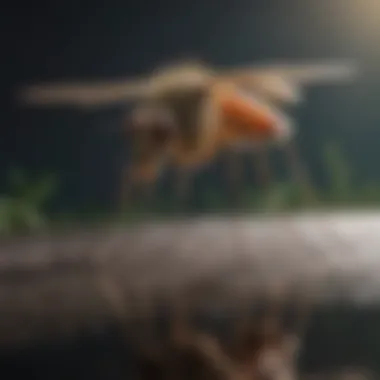
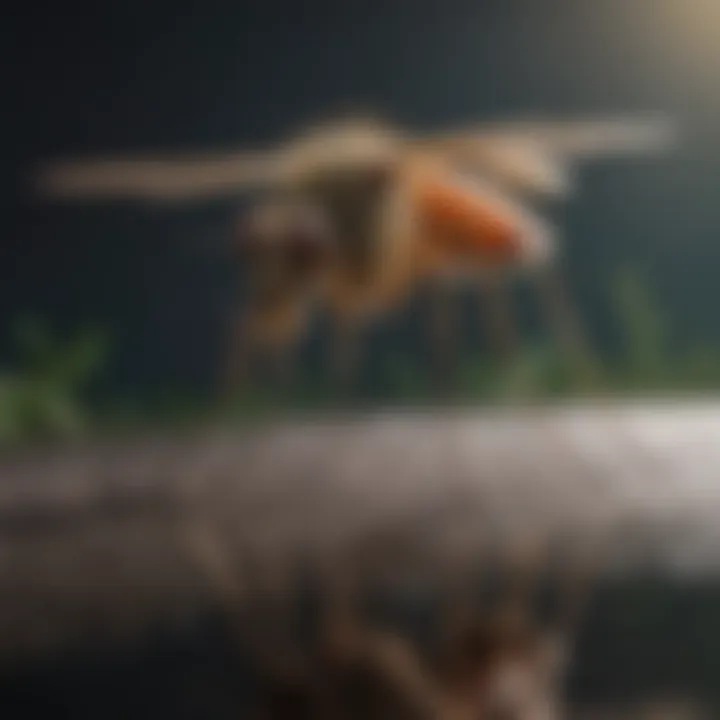
Intro
Mosquitoes are known pests that can disrupt our outdoor experiences and pose health risks through disease transmission. Among their many attractors, light stands out as a significant factor in the ways these insects locate hosts. Understanding the mechanisms of mosquito light attraction can bolster pest control methods, making them more effective for homeowners. This article investigates the biological and environmental components that influence mosquito behavior, particularly in relation to light sources.
Pest Identification
When discussing mosquito control, it is essential to first understand the characteristics of common mosquito species. Common types include the Aedes, Anopheles, and Culex mosquitoes. Each type has distinct behavioral traits and habitat preferences.
Detailed Descriptions of Common Pests
- Aedes Mosquito: Recognizable by its white markings on the legs and a lyre-shaped pattern on its thorax. These mosquitoes are known to be aggressive daytime feeders.
- Anopheles Mosquito: Notable for its malaria transmission and a distinctive resting posture. This mosquito tends to bite during nighttime.
- Culex Mosquito: Typically active during dusk and dawn, Culex mosquitoes are known carriers of West Nile virus.
Signs and Symptoms of Infestations
Identifying signs of a mosquito infestation is crucial. Look for the following indicators:
- Frequent bites, especially during evening hours.
- Presence of standing water in your surroundings, which serves as a breeding ground.
- Sightings of adult mosquitoes, particularly around light sources at night.
Prevention Strategies
Effective mosquito control starts with prevention. By making simple changes, homeowners can minimize the likelihood of infestations.
Home Maintenance Tips for Pest Prevention
- Eliminate Standing Water: Regularly check and remove standing water from pots, bird baths, gutters, and any containers around your home.
- Seal Entrances: Ensure that windows and doors are properly sealed to prevent mosquitoes from entering the home.
- Maintain Yard: Keep grass and shrubbery trimmed to reduce resting places for mosquitoes.
Natural Deterrents and Barriers
Consider using natural mosquito deterrents. For instance:
- Essential Oils: Oils such as citronella and eucalyptus can repel mosquitoes.
- Plants: Incorporating plants like lavender and marigolds can also discourage mosquito presence.
Treatment Options
In the event of an outbreak, it is necessary to employ treatment strategies. These can range from chemical solutions to natural methods.
Overview of Chemical vs. Natural Treatments
- Chemical Treatments: Products containing insecticides like permethrin or DEET are effective but require caution due to potential health risks.
- Natural Treatments: Options include garlic sprays and essential oil blends, which offer lower risk alternatives.
Step-by-Step Guides for DIY Treatments
- Essential Oil Repellent: Combine 10 drops of essential oil with 2 ounces of water in a spray bottle. Shake well and apply to exposed skin.
- Garlic Spray: Mix a quarter cup of garlic juice with two cups of water and spray around your yard to repel mosquitoes.
Mosquitoes prefer certain wavelengths of light, impacting their attraction to homes and outdoor spaces. This knowledge can aid in developing effective control measures.
Understanding mosquito attraction to light not only helps in averting infestations but also informs the selection of the right control methods. Homeowners equipped with this knowledge can face the challenges posed by these pests with confidence.
Prelims to Mosquito Attraction to Light
Mosquitoes have long been recognized as pests. Their ability to transmit diseases, such as malaria and dengue fever, makes them a significant concern for public health. In urban and rural settings, understanding what attracts these insects is vital for effective control measures. This is where the discussion on light attraction becomes essential.
Light attracts mosquitoes primarily due to their biological makeup. The majority of mosquito species exhibit a tendency to gravitate towards light sources during twilight or nighttime. This behavior has implications not only for their mating and feeding habits but also for how we can manage their populations. Recognizing the reasons behind this attraction informs homeowners and pest control professionals in selecting appropriate strategies to mitigate infestations.
The understanding of mosquito attraction to light plays a critical role in developing more effective pest control tactics. Homeowners benefit from knowledge that not only helps reduce mosquito presence but also enhances outdoor experiences. In contrast, pest management professionals can leverage scientific insights about light preferences to innovate and improve the efficacy of traps and other control measures.
By delving into the nuances of mosquito behavior, strategies related to trapping and environmental design can be optimized. Furthermore, this understanding encourages a more nuanced application of various light technologies, ensuring that any interventions are both effective and environmentally sustainable.
The Mosquito as a Pest
The mosquito, often dismissed as just a nuisance, bears significant import in the ecosystem. While these insects are part of the food chain, their involvement in disease transmission elevates them to a higher concern level for human populations. Mosquitoes breed in stagnant water and can thrive in diverse climates, making them a worldwide threat. Their presence is not just irritating; they are vectors of numerous harmful pathogens therefore, controlling their population is of utmost importance.
Defining Light Attraction
Light attraction, particularly among mosquitoes, involves biological processes where certain wavelengths of light elicit responses from these insects. Mosquitoes are not equally attracted to all light sources; their reactions depend on factors, including the spectrum of light emitted. For instance, ultraviolet and blue wavelengths appear most appealing to them, making these light types integral in developing traps. Gaining a deeper understanding of how light influences mosquito behavior can enable targeted strategies for both homeowners and pest control experts.
Biological Basis of Light Attraction in Mosquitoes
Understanding the biological foundation of light attraction is vital in unraveling possible strategies for mosquito control. Mosquitoes are not just insects; they are vectors for various diseases. Thus, comprehending their behavior is essential for developing effective interventions. The mechanisms behind their attraction to light highlight key elements that can influence pest management approaches.
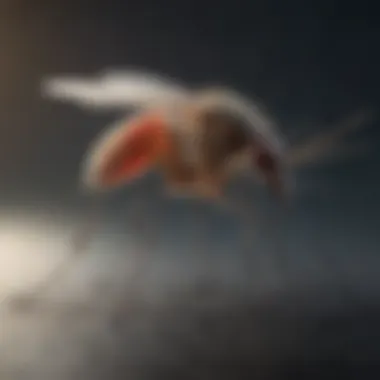
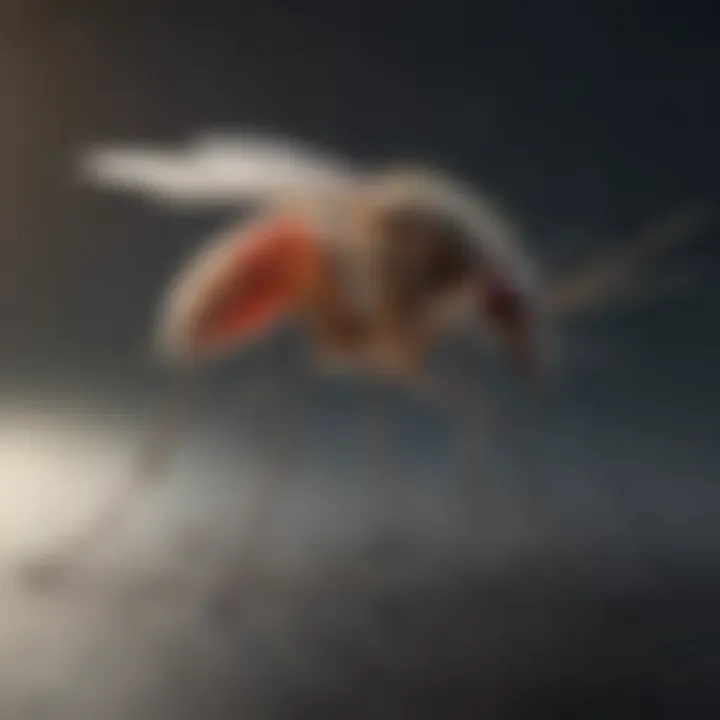
Phototaxis Explained
Phototaxis refers to the movement of an organism in response to light. In mosquitoes, this behavior is predominantly positive phototaxis, meaning they tend to move towards light sources. This phenomenon can be attributed to their evolutionary adaptations. Mosquitoes rely on light cues for navigation, especially during dusk and dawn when they are most active.
Factors influencing phototaxis include the wavelength of light. Research suggests that mosquitoes are more attracted to ultraviolet (UV) light and certain wavelengths of blue light. This knowledge is crucial for designing light traps or other control methods that exploit their natural behaviors.
- Mosquitoes' attraction to light can lead them into traps, reducing their population.
- Understanding phototaxis can help create more effective repellent strategies by minimizing light sources that attract these pests.
Role of Vision in Mosquito Behavior
The vision of mosquitoes plays a significant role in their ability to detect light and navigate their environment. Mosquitoes possess compound eyes that are sensitive to movement and changes in light intensity. This highly developed visual system allows them to react quickly to their surroundings, aiding their search for hosts.
Mosquitoes primarily use vision to locate potential hosts, such as humans and animals, which emit carbon dioxide and body heat. However, in the absence of these cues, light becomes a secondary attractant. It is crucial to comprehend how mosquitoes utilize visual signals not only to find nourishment but also to avoid threats.
In short, understanding the biological basis of light attraction in mosquitoes can lead to advancements in control strategies. By leveraging this knowledge, homeowners and pest management professionals can develop targeted approaches to minimize mosquito populations effectively. This exploration ultimately contributes to reducing mosquito-borne diseases in communities.
"Biological insights into light attraction can guide innovations in pest management, promoting healthier environments."
By focusing on specific elements of phototaxis and vision, it is possible to create more effective interventions that directly address the behavioral patterns of mosquitoes. This not only enhances the effectiveness of pest control but also promotes a more informed and engaged public when it comes to mosquito management.
Types of Light Sources and Their Effects
The discussion of light sources is crucial when examining mosquito attraction. Different kinds of light have varying effects on mosquito behavior and can influence both their presence and the effectiveness of control measures. Choosing the right light source goes beyond aesthetic preferences; it involves understanding the biological responses of mosquitoes to each type of light. Homeowners seeking effective pest control solutions can benefit greatly from a comprehensive understanding of these effects.
UV Light and Mosquito Attraction
Ultraviolet light is often regarded as particularly attractive to mosquitoes. This specific wavelength falls within the range that many insects are known to be sensitive to. Studies suggest that UV light can draw mosquitoes from greater distances compared to other light types. The visible reaction to this light can be attributed to the photoreceptors that mosquitoes possess, which are adapted for detecting UV wavelengths.
Not only does UV light attract mosquitoes, but it can also impact their activity levels. When exposed to UV light, they tend to exhibit increased activity, making them more likely to seek hosts. However, despite these findings, it is essential to consider the overall effectiveness of using UV light in trapping or control methods, as not all mosquitoes respond in the same way.
LED Lights: A Double-Edged Sword
LED lights have become popular in various applications, including pest control. However, their effectiveness in attracting mosquitoes is somewhat debated. Some studies indicate that certain wavelengths emitted from LED lights can attract mosquitoes, while others show little to no effect. The advantage of LED lights lies in their energy efficiency and longevity.
It is also important to note that not all LED lights produce the same outcome. Cooler colors, such as blue or violet, tend to be more attractive to mosquitoes compared to warmer colors like yellow or red. Homeowners must evaluate their specific situations when opting for LED options, as using them in an inappropriate spectrum could result in ineffective pest control strategies.
Incandescent Bulbs and Their Efficacy
Incandescent bulbs have served as one of the traditional light sources for many households. Their warm glow may be cozy for humans, but their efficacy in attracting mosquitoes is relatively low. While some mosquitoes do respond to incandescent light, it is not as compelling as other forms like UV or specific LED shades. The heat emitted by these bulbs may also provide an inviting environment for mosquitoes in proximity but does not guarantee attraction.
When considering incandescent bulbs for mosquito control, it is vital to recognize their limitations. Instead of drawing mosquitoes in, they may contribute to an overall ambiance that allows these pests to reside nearby. Homeowners might consider pairing incandescent lighting with other pest control methods to mitigate mosquito presence effectively.
The Science Behind Attraction Mechanisms
Understanding the science behind attraction mechanisms is key to developing effective methods for controlling mosquitoes. This section delves into how chemical signals and environmental factors play a role in the attraction of mosquitoes to light. By grasping these mechanisms, homeowners can make more informed decisions regarding their pest control strategies.
Chemical Signals and Light Interaction
Mosquitoes rely heavily on various cues to locate their hosts. Among these cues, chemical signals are paramount. Mosquitoes use olfactory receptors to detect carbon dioxide and body odors, which are emitted by humans and animals. This ability is enhanced when mosquitoes are near a light source.
When light is present, it creates a contrast in the environment, making it easier for mosquitoes to sense the chemical emissions. Often, they associate light with the presence of potential hosts. For instance, when a light trap emits certain wavelengths of light, it can inadvertently enhance the chemical signals mosquitoes use for navigation. The interplay between light and chemical attraction thus creates a potent combination that can significantly influence mosquito behavior.
The use of specific wavelengths, particularly ultraviolet light, has been shown to attract mosquitoes more effectively. This understanding can guide homeowners in selecting the right kind of light devices that can lure and trap these pests while minimizing their presence around living areas.
Environmental Influences on Attraction
Environmental factors also significantly shape how mosquitoes respond to light. Temperature, humidity, and ambient light levels create a backdrop that can either enhance or dampen mosquito attraction. For example, higher temperatures typically increase mosquito activity, making them more likely to respond to light sources. Furthermore, humidity levels can alter flight patterns and behaviors.
The presence of other variables, such as CO2 from human breath or sweat in a warm, humid environment, can further compound the effects of light attraction.
Additionally, urban settings with artificial lighting have different influences compared to rural areas, where natural light may dominate. Mosquitoes may adapt to these differing environments, changing their attraction responses based on what is available.
"Understanding these environmental influences is crucial for developing effective management strategies."
Homeowners should consider these aspects when implementing mosquito control measures. By recognizing how light interacts with environmental cues, one can create an optimized strategy to reduce mosquito populations effectively.
Implications for Pest Control Strategies
The focus on mosquito attraction to light carries significant implications for pest control strategies. Homeowners and pest management professionals can harness this understanding to implement effective measures against infestations. The application of light-based solutions offers specific benefits, such as reducing the mosquito population and potentially minimizing reliance on chemical pesticides.
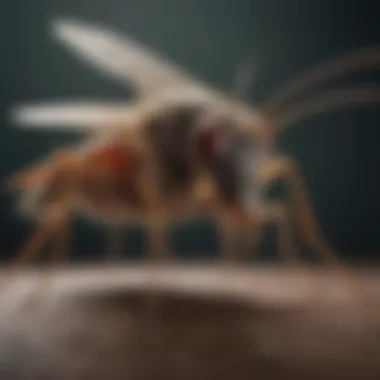
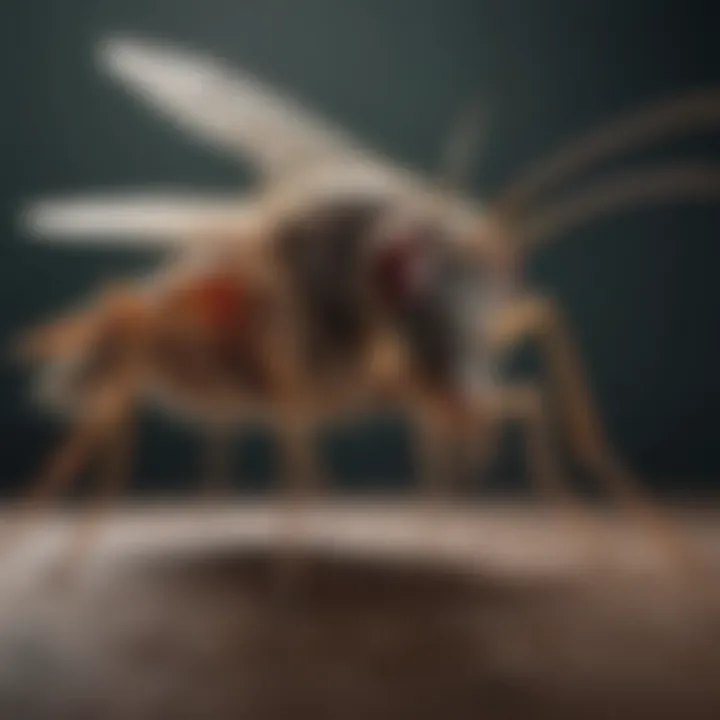
Effective pest control is crucial, especially in areas where mosquitoes pose health risks. By integrating light attraction methods into pest management plans, individuals can target active mosquito populations more specifically. Light traps, for instance, can draw them in while providing a non-toxic alternative to conventional traps. These strategies enhance the effectiveness of control measures while being environmentally friendly.
Additionally, understanding how different light wavelengths affect mosquito behavior allows for a more tailored approach. For example, ultraviolet (UV) light appears to be highly attractive to mosquitoes. This knowledge enables homeowners to select the appropriate light sources to enhance trap success.
Some key elements to consider in light-based approaches are:
- Type of light sources: The kind of light used can change which mosquito species are attracted.
- Placement of traps: Positioning traps in optimal locations, such as near breeding sites, can improve effectiveness.
- Timing of operation: The natural behaviors of mosquitoes, like their peak activity times, can influence when traps should be activated.
The combination of these factors contributes to a more comprehensive control strategy that takes advantage of natural mosquito behavior.
"Integrating light traps into pest management plans will ultimately lead to greater effectiveness, targeting mosquitoes more specifically while maintaining environmental safety."
Incorporating light strategies also necessitates an ongoing evaluation of efficacy. This continuous process includes monitoring the effectiveness of different light sources and adjusting operational methods accordingly. Homeowners are encouraged to assess the results from their chosen tactics, making modifications as needed for the best outcomes.
Using Light Traps Effectively
To utilize light traps effectively, several practical steps should be taken. Firstly, selecting a trap designed specifically for the target mosquito species is essential. For example, the BugZapper is renowned for its efficiency in attracting and trapping mosquitoes. Secondly, proper placement of traps can significantly impact their success. Ideal locations include spots with minimal surrounding light, as bright environmental conditions can hinder attraction.
Moreover, regular maintenance of the traps is crucial. This includes cleaning and ensuring the light source is functional. Traps should be operated during peak activity times, typically around dawn and dusk, to increase capture rates.
Lastly, homeowners can increase the effectiveness of light traps by combining them with attractants like carbon dioxide or octenol. This strategic combination mimics natural cues that draw mosquitoes in, enhancing trap success.
Combining Light with Other Control Methods
The concept of enhancing light-based mosquito management with other control methods is paramount for comprehensive pest control. One of the most effective integrations is combining light traps with larvicides. By targeting mosquito larvae in standing water, homeowners can reduce the number of adult mosquitoes before they even have a chance to fly.
In addition, the integration of physical barriers, such as screens or nets, works well with light-based strategies. This approach can limit mosquito entry into homes while traps capture those that are drawn in by the lights outside.
Moreover, light-based strategies should be considered alongside community efforts. Local initiatives focused on managing standing water, public education on personal protection, and coordinated pest control efforts can create a far-reaching impact.
Ultimately, the interplay between light attraction and these additional control methods leads to a more effective and holistic approach to managing mosquito populations.
Limitations of Light-Based Approaches
Light-based approaches to mosquito control are often touted for their simplicity and the minimal environmental disruption they cause. However, understanding the limitations of these methods is essential for effective pest management. This section will explore the potential ineffectiveness of light in expansive areas and the environmental concerns associated with its use.
Potential Ineffectiveness in Large Areas
Using light as a tool for mosquito control tends to have limitations in large outdoor settings. Mosquito populations can be extensive, covering significant territories. Light traps, by nature, attract insects from nearby areas, but this attraction is often localized. A few light traps scattered across a vast yard may not significantly reduce the overall mosquito population.
Moreover, factors such as wind, temperature, and presence of other light sources can diminish the effectiveness of light traps. For example, a light trap may attract mosquitoes; however, if there are no traps within a reasonable distance, mosquitoes may simply migrate away. This tendency means that homeowners must consider the size of their property and the expected density of mosquito populations when relying on light-based solutions.
Environmental Concerns with Light Use
While light traps are generally considered environmentally friendly, they do come with their own set of challenges that could raise concerns. The introduction of artificial light into an ecosystem can disrupt local wildlife. One major issue is the effect on non-target species.
For instance, many beneficial insects can also be attracted to these light sources, leading to unintended consequences in the ecosystem. Additionally, the reliance on certain wavelengths of light—such as ultraviolet light—can result in increased energy consumption, which may not align with environmental sustainability efforts.
Another key point to ponder is the potential for light pollution. Excessive use of artificial light can disrupt nocturnal wildlife behaviors and have an impact on local flora's ability to thrive. Homeowners need to balance their pest control strategies with ecological considerations, keeping in mind how their actions may influence the broader environment.
Homeowners must engage with these complexities and weigh the benefits against the potential drawbacks. This understanding is critical for developing a responsible mosquito management strategy.
Innovative Research in Mosquito Management
Innovative research in mosquito management is critical, especially in the context of their attraction to light. This field continuously evolves, aiming to develop effective methods for controlling mosquito populations. The core focus of this research is on understanding the behavioral patterns of mosquitoes and how these can be exploited for more effective pest management.
Scientists are increasingly investigating the interplay between different types of light sources and mosquito behavior. This research explores how specific wavelengths or intensities of light can lure mosquitoes effectively. With an increased understanding of these factors, new technologies can emerge that may help homeowners and pest management professionals tackle the persistent problem of mosquitoes in a more targeted manner.
New Technologies in Light Attraction
Recent advancements in technology contribute significantly to the field of mosquito control. Innovations such as smart light traps are becoming more commonplace. These devices utilize sensors and automated features to optimize light emission based on real-time insect activity. By adjusting the intensity and type of light emitted, smart traps can potentially maximize attraction levels and capture rates.
Moreover, some devices are being designed to integrate with mobile applications. This allows users to monitor and control their pest management strategies directly from their smartphones. Users can track mosquito activity, leading to a more informed approach to using light traps. Products such as the Mosquito Magnet and the Dynatrap demonstrate the practical application of these technologies in real-world situations.
Future Directions in Mosquito Control
The direction of future research in mosquito control is promising. As scientists explore more intricate facets of mosquito attraction to light, several potential pathways emerge. One promising avenue is the investigation of combined strategies. For instance, integrating light traps with other pest control techniques could yield higher success rates.
Additionally, there is a growing interest in developing sustainable light sources that minimize environmental impacts. This focus aligns with the increasing awareness of ecological safety. Researchers are also looking into genetic modifications in mosquito populations to reduce their breeding and survival rates. Such innovations may become a part of an integrated pest management approach in the future.


Case Studies in Effective Light Use
Examining case studies provides valuable insights into the real-world implications and effectiveness of light-based mosquito control measures. These studies showcase practical applications of theoretical knowledge, enabling us to understand not only the successes but also the challenges faced in diverse environments. Effective implementations in both urban and rural settings demonstrate how tailored strategies can markedly improve mosquito management, ultimately benefiting homeowners and pest management professionals alike.
Successful Implementations in Urban Settings
Urban environments present unique challenges for mosquito control due to higher population densities and varied habitat conditions. Light-based solutions have been successfully integrated into urban planning. For instance, cities like Miami have deployed light traps in public areas. These traps use UV light to attract mosquitoes, helping to reduce local populations effectively.
- Increased Awareness: These initiatives often coincide with public awareness campaigns, making it clear how residents can interact with and support the efforts.
- Monitoring and Data: Another rational approach involves ongoing monitoring. Local governments collect data on mosquito populations before and after implementing light traps. This enables a clear measurement of effectiveness and encourages adjustments as needed.
Such community involvement in urban settings is essential. It fosters a sense of shared responsibility, reminding citizens that successful mosquito control is often a collaborative effort. Moreover, cities that have embraced these technologies often report a marked reduction in mosquito-borne illness cases.
Assessing Performance in Rural Areas
Rural localities exhibit different dynamics when it comes to mosquito attraction to light. In these areas, light-based strategies may need distinct assessment criteria. For example, a case study conducted in a rural community in Louisiana focused on comparing various light sources used in mosquito traps. Results indicated that certain combinations of LED and UV light led to higher capture rates during peak activity times.
- Adaptive Strategies: Residents in rural areas can benefit from adaptive strategies depending on the specific species prevalent in their areas. Understanding the local mosquito behavior becomes crucial in choosing the right light solutions.
- Economic Considerations: Cost is always a factor. Rural areas often have budget constraints. Thus, effective light traps must juxtapose efficiency and affordability to remain viable.
A study like this emphasizes the necessity for rural populations to adopt flexible and adaptive approaches to mosquito management. Moreover, findings can aid in developing economic models that balance costs and effectiveness.
Successful light-based mosquito management hinges on thorough research, community cooperation, and adaptability to local conditions.
Overall, the analysis of case studies in both urban and rural settings illustrates the multifaceted nature of light-based mosquito control. These insights can help formulate targeted strategies that address specific community needs, paving the way for enhanced public health efforts.
Consumer Considerations When Choosing Light Solutions
When selecting effective light solutions for mosquito control, consumers must navigate a landscape filled with diverse products and claims. It becomes crucial to understand various factors that can influence the effectiveness and suitability of these choices. Awareness allows consumers to make informed decisions that align with their specific needs and circumstances.
Evaluating Product Claims
Product claims can often be misleading. Many manufacturers promote their light devices as highly effective against mosquitoes. However, not all claims hold the same weight. Consumers should critically assess the veracity of these claims before making a purchase. Look for evidence such as:
- Scientific studies: Independent research evaluations can validate effectiveness.
- Customer feedback: Reviews from users can offer insights into real-world performance.
- Certifications and endorsements: Look for approvals from pest management associations or regulatory bodies.
It's key to focus on products that provide clear, substantiated information rather than ambiguous marketing language. This practice helps avoid investing in devices that may underperform or not meet expectations.
Cost-Benefit Analysis of Light Devices
Conducting a cost-benefit analysis is central to making a wise choice in light solutions. This involves comparing the initial purchase cost of devices against their effectiveness and longevity.
When evaluating costs, consider:
- Purchase price: The upfront investment needed for the device.
- Maintenance costs: Ongoing expenses for bulbs, repairs, or upgrades.
- Durability and lifespan: Higher-quality options may have a greater initial cost but could last longer, thus saving money over time.
Benefits should also be considered in this analysis:
- Effectiveness in reducing mosquito populations: A strong performance can lead to fewer bites and potentially lower mosquito-borne disease risks.
- Convenience of use and installation: Devices that are easy to set up or maintain can save time and effort.
- Environmental impact: Some devices may be more eco-friendly, aligning with sustainability values.
By understanding these costs and benefits, consumers can make a more informed choice about which light solutions best fits their lifestyle and environment.
Closure
The conclusion of this article serves as a critical focal point for understanding the myriad factors surrounding mosquito attraction to light. It is essential to synthesize the insights gained throughout the discussion to establish a coherent picture for homeowners and pest management professionals. This section emphasizes the significance of light's role in mosquito behavior, as well as the implications for effective control strategies.
One of the key elements covered in the article is the biological basis for why certain light wavelengths attract mosquitoes more than others. Understanding these mechanisms enables targeted approaches in pest control, making it possible to minimize mosquito populations more effectively. Furthermore, a thorough look at various light sources such as UV light, LED lights, and incandescent bulbs highlights the need for selection based on specific conditions and desired outcomes.
Moreover, actionable insights regarding the efficacy of light traps and their integration with other pest control methods are crucial for effective management. Pulling these insights together helps individuals make informed choices, leading to a direct benefit in local mosquito population control efforts.
Additionally, recognizing the limitations and environmental considerations when using light-based strategies is vital. Awareness fostered through this conclusion can guide users in adopting more sustainable practices.
Ultimately, this article not only delineates the fundamental behaviors of mosquitoes regarding light but also articulates achievable pathways for improvement in mosquito management. The conclusion provides readers with a firm ground to build actionable and informed strategies.
Summary of Key Findings
- Mosquitoes exhibit distinct phototactic behavior, responding differently to various light wavelengths.
- UV light is particularly attractive to many mosquito species, impacting pest control planning.
- Using light traps combined with other control techniques enhances the effectiveness of mosquito management.
- Environmental impacts of light use must be considered to avoid adverse effects on ecosystems.
- Knowledge of mosquito behavior in relation to light can enhance control efforts, leading to improved outcomes.
"Optimizing the use of light sources can significantly influence mosquito population control, offering a blend of effectiveness and sustainability."
Future Perspectives on Mosquito Management
The landscape of mosquito management is constantly evolving, driven by both technological advancements and growing ecological awareness. One future trend involves the development of smarter light traps. These devices are expected to use sensors and algorithms to optimize catch rates based on real-time mosquito behavior patterns.
Another area of interest is the combination of light-based strategies with genetic control methods. Researchers are exploring how altering the genetics of specific mosquito populations can minimize their capacity to reproduce, thereby supporting traditional light-based pest control methods.
Further understanding of the environmental interactions influencing mosquito attraction opens avenues for more effective integrated pest management. By studying how shifts in climate and habitat affect light attraction behavior, pest control strategies can be tailored more precisely to local conditions.
In summary, continued research into the intricacies of mosquito behavior relative to light will inform future practices, ultimately leading to a holistic approach that values both human health and ecological balance.



